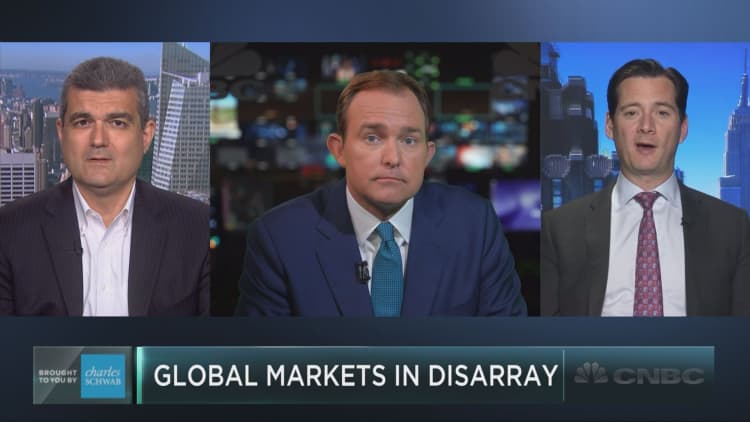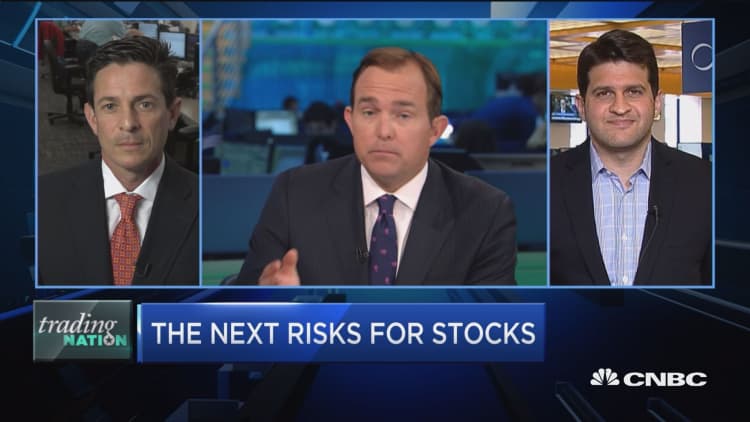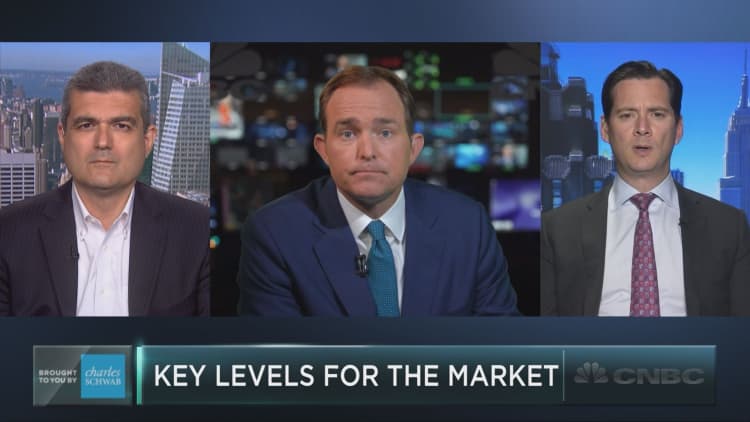


Even as markets quake, the market's fear index is sighing in relief.
Through midday Tuesday trading, the CBOE Volatility Index has fallen some 23 percent on the week, logging back-to-back declines on Monday and Tuesday. This drop in the so-called "fear gauge" comes even as the S&P has slipped an additional 0.8 percent on the week, following Friday's post-Brexit sell-off.
How unusual is this sort of divergence between the indicators thrown off by the VIX and by the itself? Very. Actually, when the past 20 years of data are examined, one finds that never before has the S&P been down in a two-day period in which the VIX has fallen 20 percent or more.
To understand what's driving this unusual state of affairs, it is necessary to make the all-too-often-forgotten distinction between implied and realized volatility. Realized volatility measures how much the market is actually moving, and that metric has indeed risen over the course of the week. Implied volatility, on the other hand, measures trader expectations of how volatile the market will be, based on options prices.
While implied volatility generally moves in the same direction as realized volatility, expectations of future volatility have slid this week, as the Brexit vote falls further and further into the rearview mirror. That is to say, even though the worse of the referendum's two possible outcomes (from the market's perspective) indeed transpired, the fact that an outcome has been produced means that options traders may no longer consider the vote as they set options prices.
"All the hedging that was done prior to this" is being "taken off," which is driving down options prices and hence implied volatility measures, Dennis Davitt of Harvest Volatility Management explained in a Tuesday email to CNBC.
Indeed, this difference between what the VIX and the S&P are saying is the mirror image of the difference seen a few weeks ago, when the VIX was surging even as the market stood still. At that point, it was remarked that the S&P had never been down so little while the VIX had risen by that much. Of course, that was when the anxiety of a Brexit vote was being baked into the market but before trading on its result was possible.
Still, some say that the VIX's reaction to the Brexit has been unreasonably mild.
"I do think that spot VIX speaking around 25, SPX 10-day realized volatility at 24, etc. are indicative of a shock too benign relative to the risks presented by Brexit," MKM derivatives strategist Jim Strugger wrote to CNBC Tuesday. "So before spot VIX revisits a sub-15 trough I expect this to re-intensify and see [the VIX] with at least a 3-handle," meaning he expects the volatility index to rise by 50 percent.
More generally, the VIX turnabout is "a bit surprising but indicative of the complacency I think persists," Strugger added. "Obviously, I'd be surprised if this continues in the near term."






